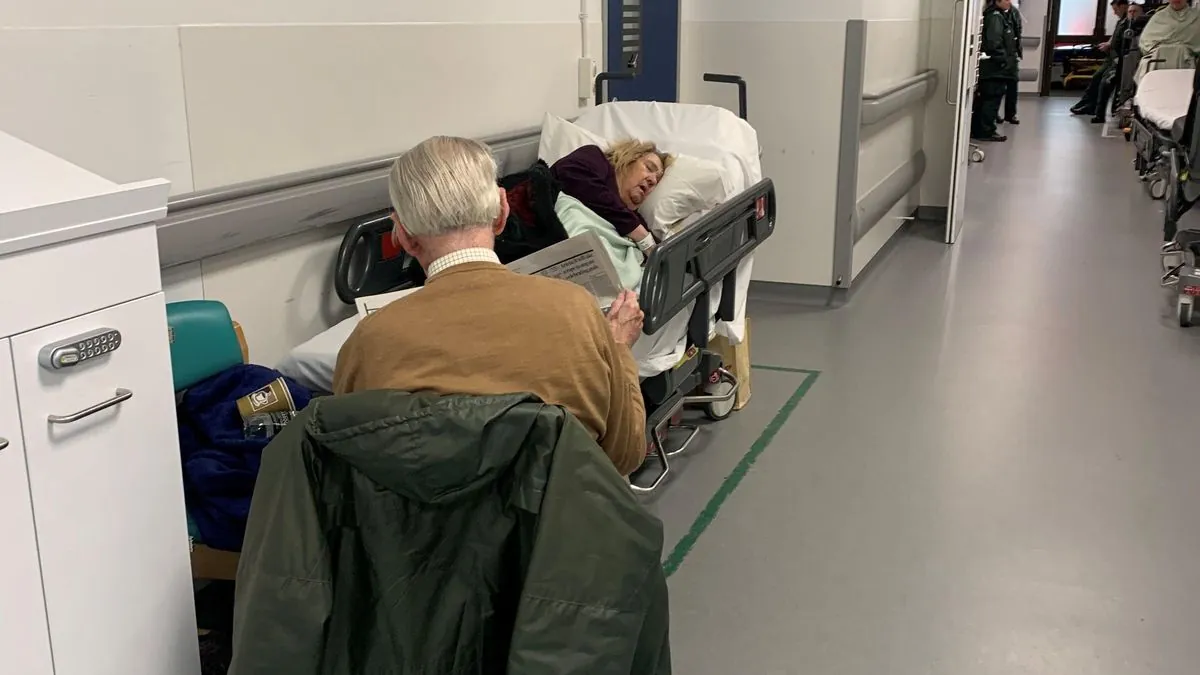Glasgow Hospital A&E Crisis: Patient Safety Concerns Amid Overcapacity
Inspectors raise alarm over patient safety at Glasgow Royal Infirmary's A&E, operating at 250% capacity. NHS Greater Glasgow and Clyde implements improvements following Healthcare Improvement Scotland's report.

A recent inspection of the Glasgow Royal Infirmary's Accident and Emergency (A&E) unit has unveiled significant patient safety concerns, prompting immediate action from health authorities. The Healthcare Improvement Scotland (HIS) report, released following inspections in April and June 2024, highlighted alarming issues within one of Scotland's oldest medical institutions.
The A&E department was found to be "often operating at over 250 per cent capacity," far exceeding the recommended safe bed occupancy level of 85% suggested by the British Medical Association and the Royal College of Emergency Medicine. This overcapacity situation has raised serious concerns about patient care and safety.

During the April inspection, HIS observers noted several disturbing incidents. A patient was left without food, drink, or pain relief for over seven hours, while another nearly fell from a trolley near a nursing station. These events prompted a more comprehensive inspection in June.
The report revealed 11 requirements imposed on NHS Greater Glasgow and Clyde, addressing issues such as:
- Lack of coordination within the nursing team
- Misidentified patients leading to repeated tests
- Patients falling from trolleys
- Critically ill patients waiting in corridors
"They provided assurance that immediate key actions had been put in place to improve patient safety within the department. We revisited the emergency department as part of the subsequent inspection and saw that significant improvements had been introduced to enhance patient safety and care."
In response to these findings, NHS Greater Glasgow and Clyde implemented immediate measures, including allocating additional staff to care for patients in corridors. The health board acknowledged the shortcomings and reported that nine out of the 11 requirements have been completed, with the remaining two on track for completion by the end of December 2024.
The follow-up inspection in June 2024 noted significant improvements, with patients appearing well-cared for despite the continued high occupancy. This crisis at Glasgow Royal Infirmary, which has been at the forefront of medical advancements since its founding in 1794, underscores the broader challenges facing emergency departments worldwide.
As the largest health board in Scotland, serving 1.2 million people, NHS Greater Glasgow and Clyde faces unique pressures. The ongoing struggle with overcapacity reflects global trends, exacerbated by factors such as aging populations and the recent COVID-19 pandemic.
While the immediate response to the HIS report is encouraging, long-term solutions to address the root causes of A&E overcrowding remain crucial for ensuring patient safety and maintaining the high standards of care that have been the hallmark of this historic institution for over two centuries.


































